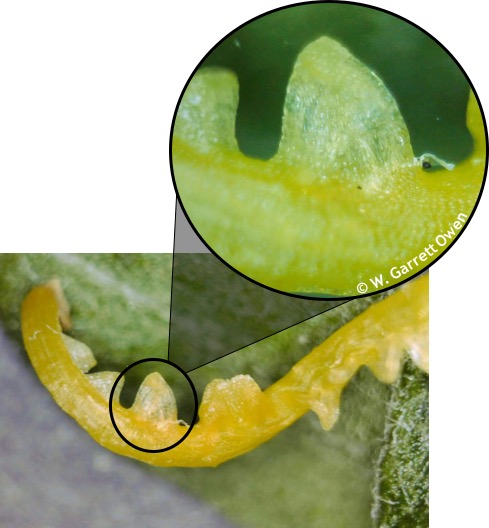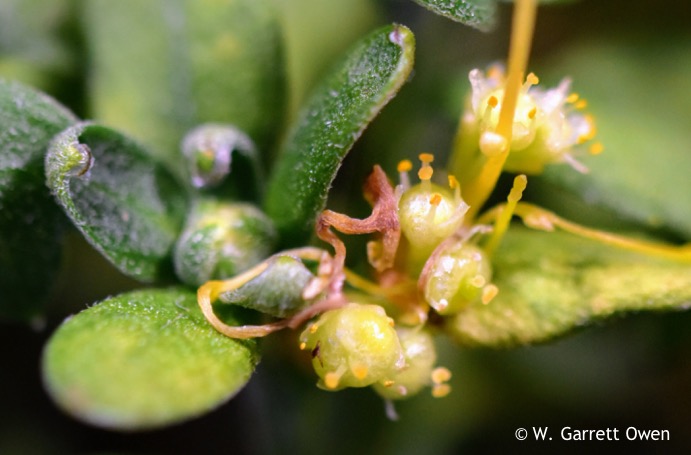The dodder you never wanted
Dodder, a parasitic vining plant, is an uncommon greenhouse weed that survives off plants and can rapidly grow infesting multiple plants to whole crops.

Parasitic plants are rarely found infecting greenhouse crops, however, on a recent greenhouse visit, field dodder (Cuscuta campestris; Fig. 1) was observed among a crop of greenhouse-grown fall garden mums (Chrysanthemum ×morifolium). With a wide host range, the many species of dodder (Cuscuta spp.) can parasitize native plants, ornamentals and agricultural crops in Michigan. Legumes, bedding plants, nursery crops and vegetables can serve as hosts for dodder.
Seed-borne, dodder germinates from contaminated soilless substrate or soil under high air temperatures (77 degrees Fahrenheit or higher). Dodder is classified as a holoparasitic plant as its minute, scale-like leaves and low photosynthetic capacity makes it reliant on a host plant to complete its life cycle. Far-red light serves as an indicator of a possible host nearby and triggers the formation of haustoria, or suckers with a saw tooth-like appearance (Fig. 2). The vining plant has a spaghetti-like appearance and grows rapidly; coiling its pale green, yellow or orange tendrils and stems around the host. The haustoria attach to the stem of the host plant and serve as a pipeline for dodder to extract water, carbohydrates and nutrients.

Figure 2. Haustoria, or suckers with a saw tooth-like appearance, attach to the stem of the host plant and serve as a pipeline for dodder to extract water, carbohydrates and nutrients.
Once dodder is united with the host, the initial stem that emerged from the substrate withers. Dodder flowers (Fig. 3) and produces seed quickly after attaching to the host, with flowers arranged in compact clusters and small seeds irregularly shaped with a rough-surface.

Figure 3. Field dodder (Cuscuta campestris) flowers are arranged in compact clusters.
Management and control of dodder infection in greenhouses is limited to prevention and host plant culling. Keep greenhouses and surrounding areas free of weeds to prevent dodder seed from moving into your production area. Frequently inspect crops. Suspicious plants can be submitted to Michigan State University’s Diagnostic Services for identification.
Detaching dodder from the host plants may be difficult and therefore hand removal may be insufficient. Parasitized containers should be culled by bagging in the production area to reduce the potential of seed dispersible. Bags should be disposed of in the trash or contents burned to avoid dispersing the seed into other environments.
Dodder only reproduces by seed, so preventing further seed production is very important. Seed can remain dormant for up to five years. Seeds may be dispersed by a variety of means, such as birds, water, equipment, contaminated substrate or soil, mulch and infected plant material. Outside the greenhouse, control can be achieved by hand removal, burning, mowing or herbicide application.



 Print
Print Email
Email
